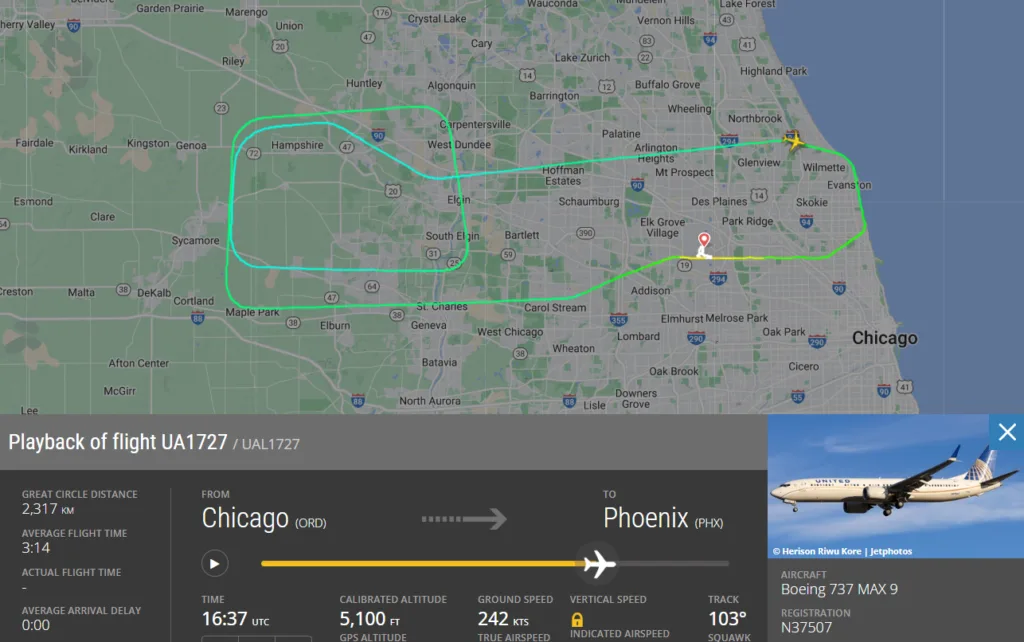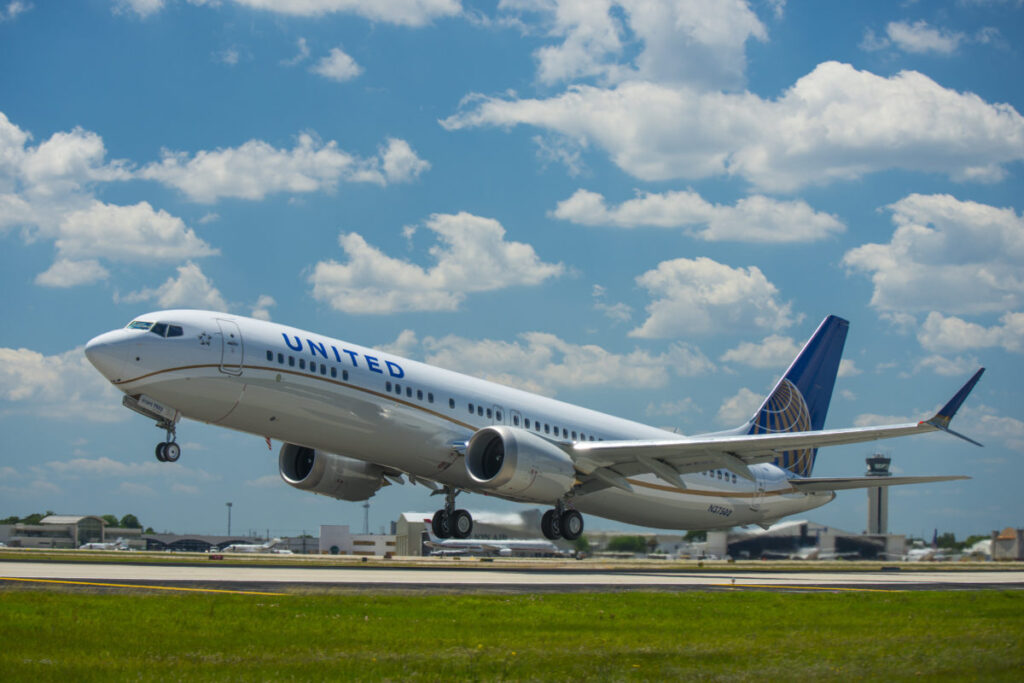On January 12, 2025, a United Airlines Boeing 737 MAX en route to Phoenix was forced to return to Chicago O’Hare International Airport after a coyote strike during takeoff caused minor damage to the aircraft’s nose gear. The incident delayed passengers and highlighted ongoing wildlife management challenges at airports.
The United Airlines Boeing 737 MAX 9, with registration N37507 was operating flight UA1727 was departing O’Hare at around 10 a.m. when a coyote managed to evade wildlife control measures and wander onto the active runway. The collision occurred as the aircraft was accelerating for takeoff, striking the animal with its front right-hand nose gear.
The pilots immediately detected the impact and made the decision to return to the airport for safety inspections. After climbing to just 6,000 feet, the aircraft circled in a holding pattern before safely landing back at O’Hare.

Damage Assessment and Passenger Delays
The Federal Aviation Administration (FAA) reported that the Boeing 737MAX sustained only minor damage. An official incident log described the situation as follows: “Aircraft struck a coyote on departure damaging right nose gear.” Engineers assessed the aircraft and confirmed it was airworthy.
United Airlines quickly arranged for an alternate plane to continue the journey to Phoenix, resulting in a four-hour delay for passengers. The original aircraft resumed operations later that afternoon.
While collisions with birds—commonly referred to as bird strikes—are more frequent, incidents involving mammals like coyotes are less common but equally hazardous. Chicago O’Hare, one of the busiest airports in the world, has an extensive wildlife management program designed to mitigate such risks.
Coyotes are generally nocturnal but have adapted to urban environments, with an estimated 2,000 coyotes living in the Chicago area. Despite robust efforts, occasional breaches like this incident demonstrate the challenges of wildlife management on sprawling airfields.

Editor’s Take: United Airlines 737 Diversion
The professionalism displayed by the flight crew and ground staff ensured the safety of all passengers and minimized disruptions. While wildlife-related incidents are rare, they underscore the importance of stringent airport safety protocols and quick decision-making by aviation professionals.
This event serves as a reminder of the unpredictable nature of aviation and the efforts required to ensure safe operations in the face of unexpected challenges.
While the coyote incident underscores potential airfield risks, it also reflects the professionalism of United Airlines staff and crew in handling unexpected challenges efficiently.
Please join our Telegram Channel for the latest aviation updates.

1 Comment
Pingback: FAA Orders Boeing 787 Seat-Track Inspection Over Safety Concerns - Aero World